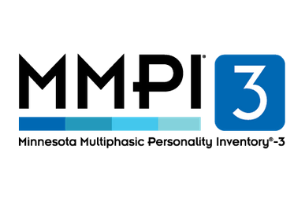Description
The MMPI®-3 builds on the history and strengths of the MMPI instruments to provide an empirically validated, psychometrically up-to-date standard for psychological assessment.
“This is the US norm version of MMPI-3″

The MMPI®-3 builds on the history and strengths of the MMPI instruments to provide an empirically validated, psychometrically up-to-date standard for psychological assessment.
“This is the US norm version of MMPI-3″
The MMPI®-3 builds on the history and strengths of the MMPI instruments to provide an empirically validated, psychometrically up-to-date standard for psychological assessment.
“This is the US norm version of MMPI-3″
Yossef S. Ben-Porath, PhD, Auke Tellegen, PhD
Administration:Online administration, paper and pencil.
Scoring Option:Q-global™ Web-based Administration, Scoring and Reporting or Hand Scoring
:The MMPI®-3 is a contemporary personality assessment for mental health, medical, forensic, and public safety settings. This newest version builds on the history and strengths of the MMPI instruments to provide an empirically validated, psychometrically up-to-date standard for psychological assessment.
New, nationally representative English language normative sample
Updated for the first time since the mid-1980s and designed to match US Census Bureau demographic projections for 2020, the MMPI-3 normative sample includes 1,620 individuals (810 men and 810 women) ages 18 and older from diverse communities throughout the United States.
Spanish language translation and normative sample
For the first time, the adult Spanish translation of the MMPI-3 includes norms derived from a sample of 550 US Spanish speakers (275 men and 275 women).
New and updated items and scales
The MMPI-3 includes 72 new and 24 updated items used to develop new scales (Eating Concerns, Compulsivity, Impulsivity, and Self-Importance) and to update existing MMPI-2-RF scales.
Comparison groups
Descriptive data from a broad range of settings make it possible to compare an individual’s test results with relevant groups in mental health, medical, forensic, and public safety settings.
Administration time
Only 25–35 minutes to administer by computer, and 35–50 minutes to administer by paper and pencil.
Comprehensive administration manual
The Manual for Administration, Scoring, and Interpretation provides a brief description of the background for and development of the MMPI-3, a description of the new normative sample, case illustrations, and standard procedures for administering, scoring, and interpretation.
Comprehensive technical manual
The Technical Manual describes the rationale for developing the test, the procedures used to fashion the scales and collect the new test norms, descriptive findings on the scales in a broad range of settings, and extensive psychometric findings. These findings include scale score reliability estimates as well as standard errors of measurement and empirical correlates in mental health, medical, forensic, public safety, and other nonclinical settings.
MMPI-2-RF literature appropriate for MMPI-3 interpretation
Detailed analyses reported in the Technical Manual indicate that interpretation of the updated MMPI-3 scales can be guided by over 450 peer-reviewed MMPI-2-RF publications.
Manual Supplement for the US Spanish Translation
The manual supplement provides guidance on the use of the Spanish translation of the MMPI-3, developed for use in the US. Topics covered include procedures used to collect and develop norms for the Spanish version of the test, the composition of the MMPI-3 Spanish language normative sample, psychometric findings, English/Spanish equivalence analyses, and special considerations for administration, scoring, and interpretation of the Spanish version of the MMPI-3.
This report provides scores for all 52 scales of the test and includes a summary page to facilitate standard MMPI-3 interpretation along with customizable item-level information. The report is arranged in the following sections:
Sample Score Reports
This report includes the Score Report followed by an integrated interpretation of scores organized in the following sections:
Sample Interpretive Reports
Authors: David M. Corey, PhD & Yossef S. Ben-Porath, PhD
The leading psychological screening tool for use in public safety settings has expanded its offerings. Introducing a comprehensive suite of reports to meet your personnel selection needs.
Each report includes full scoring information (see Score Report) and an integrated interpretation of scores specifically for police, correctional, dispatcher, or firefighter/medic candidates. Reports are organized in the following sections:
Sample Public Safety Candidate Interpretive Reports
Now’s your chance to try out the new MMPI-3 for free! Qualified professionals can receive two free clinical interpretive reports on Q-global® or Q Local® and access the first chapter of the manuals and user’s guide.
Learn about the MMPI-3 through these complimentary online learning modules. Continuing Education Credits are not offered for viewing these modules.
Four modules offer approximately three hours of comprehensive MMPI-3 content:
The following resources are available for MMPI-3.